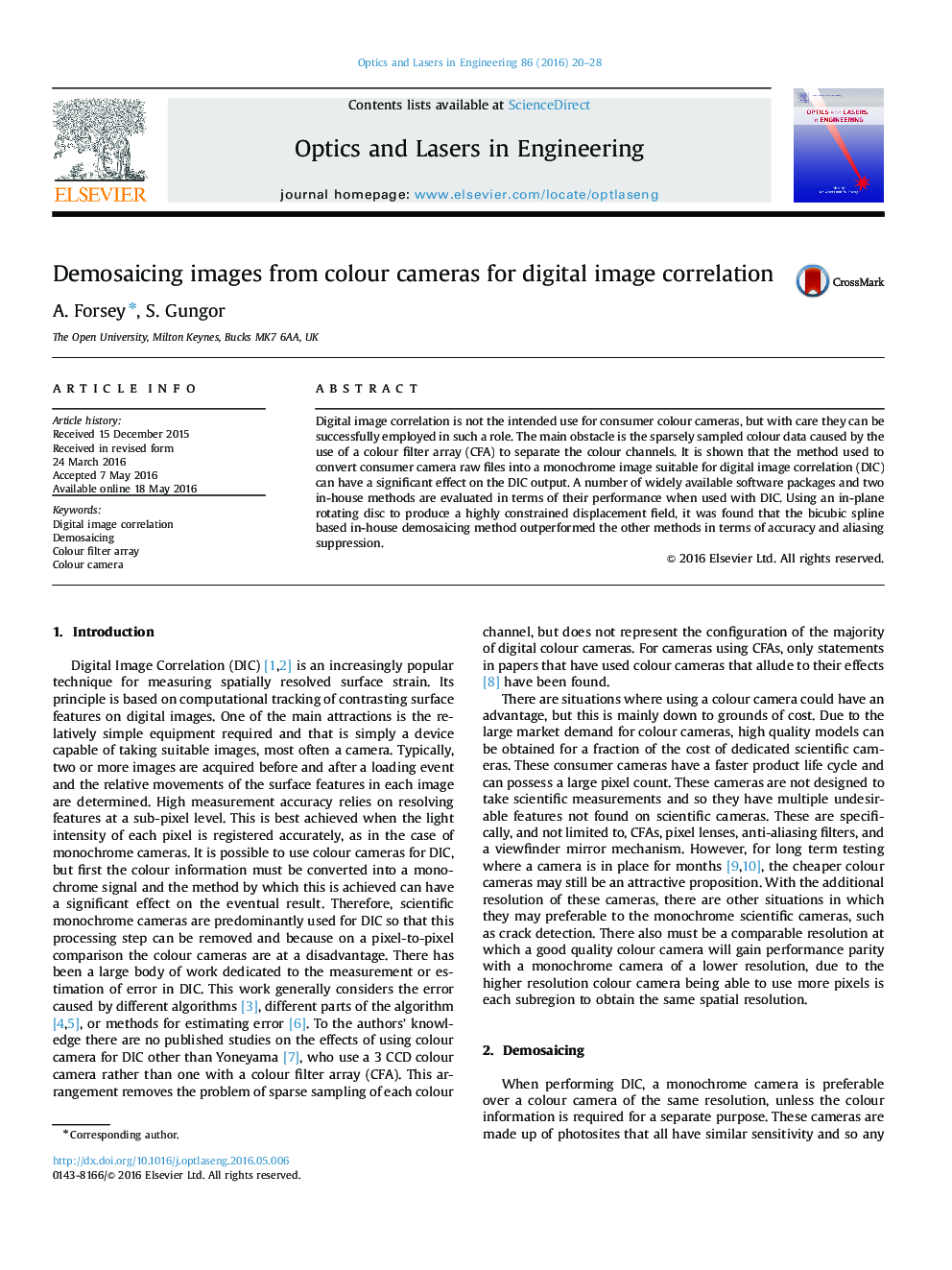| Article ID | Journal | Published Year | Pages | File Type |
|---|---|---|---|---|
| 734981 | Optics and Lasers in Engineering | 2016 | 9 Pages |
•Comparison between different demosaicing algorithms for use with digital image correlation.•A bicubic spline based demosaicing method is found to outperform other proprietary and open source methods tested.•Bi-integer bias is found to be the dominant aliasing effect for colour cameras.•High-resolution colour cameras can compare well with monochrome cameras for use with DIC in certain applications.
Digital image correlation is not the intended use for consumer colour cameras, but with care they can be successfully employed in such a role. The main obstacle is the sparsely sampled colour data caused by the use of a colour filter array (CFA) to separate the colour channels. It is shown that the method used to convert consumer camera raw files into a monochrome image suitable for digital image correlation (DIC) can have a significant effect on the DIC output. A number of widely available software packages and two in-house methods are evaluated in terms of their performance when used with DIC. Using an in-plane rotating disc to produce a highly constrained displacement field, it was found that the bicubic spline based in-house demosaicing method outperformed the other methods in terms of accuracy and aliasing suppression.
